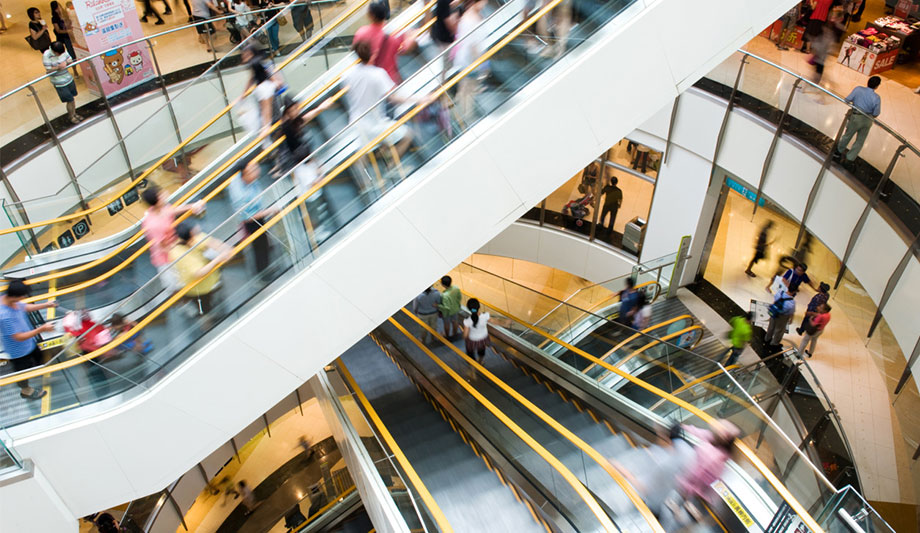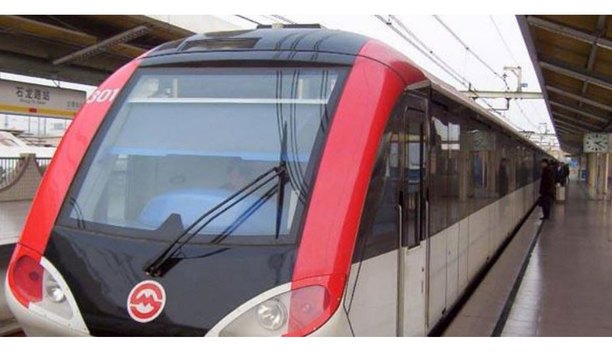Each security sector has a particular bias, whether it be people, assets or information. With large volumes of cash and high values of stock and assets, along with deliberately open and inviting access, retail sites can be vulnerable - appealing to criminals as much as genuine shoppers. The vital need to protect these assets makes the retail market a highly important one for the security industry.
Finding the right balance of security
One of the biggest challenges to providing security in the retail sector is finding the right balance between protecting staff/customers, merchandise and property whilst allowing free and easy access to attract shoppers. This also involves successfully creating secure areas whilst working within the wider framework of an open and accessible retail environment. A retail outlet which looks too intimidating is unlikely to encourage much business, but conversely one which lacks the right levels of security could well be targeted by opportunistic shoplifters and thieves. Rather than stopping entry, most retail security regimes rely upon perimeter monitoring of visitors and stock items and the ability to alert the security team if there are any breaches.
This is where well-targeted and integrated security systems can really make a difference. An integrated security system, such as TDSi’s EXgarde PRO software, brings together all the security components (access controlled doors, CCTV, intruder alarms etc.) in one easy-to-use portal. This allows the security controller to be rapidly alerted and assess a security incident, as well as promptly guiding the relevant response to deal with it.
At the same time as providing the highest levels of security, the need for ease of access should not be underestimated. Security systems need to be subtle enough that authorised staff can use them without hindrance, be it smart cards or increasingly through biometrics systems. Any security system that hinders staff from their job or from helping customers is going to discourage visitors and ultimately lose the retailer future trade.
Health and safety
Equally there are health and safety issues to consider in a busy retail outlet. Integrated security systems can often play a big part in investigating not only criminal and threatening activity but also looking at accidents or other health and safety issues. For example, in the event of a fire an integrated security system that is linked to the fire monitoring/control system can take charge of the situation by alerting the relevant teams and rescue services as well as facilitating escape from dangerous areas and monitoring for anyone in danger.
Power over Internet systems make installation simpler and cheaper |
Equally, if an injury or health hazard has occurred on the premises, the CCTV footage along with other security data can be used for investigation purposes and any legal action that may result. This also has a bearing from a legal point of view and can help to protect the employer as much as the employees. For example if an employee or customer hurts themselves, the CCTV files can show the circumstances and help to ensure a fair and unbiased outcome with regards to liability (for example, in the case of a compensation claim).
High risk retail businesses
Certain retail premises may be at extra risk if they hold expensive stock (for example a jewellers) or hold large amounts of cash. Whilst physical security (such as shutters or bollards) can repulse many potential attacks, these types of business are often targeted by more calculated and planned criminal actions. Integrated security is again very useful in alerting security teams to these attacks, by using a combination of alarm and CCTV systems to respond to unusual and potentially criminal activity.
This may be a break-in outside normal business hours, but equally it could be an armed intruder during opening hours, threatening staff and customers. Video analytics can be used to automatically inform the security team that a situation may be taking place and helping them to take the appropriate action.
Equally, this could involve an intruder entering secured parts of the retail building by ‘tailgating’ authorised staff. People counting security systems are very useful in these instances, with systems monitoring people traffic and flagging up movements that staff may be unaware of. Anti-pass-back technology can be used to detect and prevent unauthorised paths (which would highlight potentially stolen or cloned cards for instance). Video-based analytics can also be used to flag potential shoplifters before they can leave the premises.
The detection of tampering is also a useful tool in the security arsenal. Vandal-resistant renders and tamper-resistant screws on controllers make it much harder for criminals to interfere with access control and security systems.
Cost-effective solutions
Security systems need to reduce operational costs but still need to deliver the best levels of performance |
Like all sectors, retailers are just as mindful of costs and security systems are no exception. Often this means offering an excellent return on investment rather than simply keeping the cost price as low as possible. Security systems need to reduce operational costs but still to deliver the best levels of performance. Lower operating costs can also be about the actual energy consumption of the systems, with switch mode power supplies becoming a useful method of achieving this without compromising performance. Similarly, Power over Internet (POE) systems make installation simpler and cheaper and also offer energy saving over more traditional separately powered systems.
It’s also important to ensure that security systems match the performance required and the budgets allocated. For example, biometrics systems offer many benefits including high levels of security and convenience, but for lower risk access control situations a more inexpensive MIFARE Plus card alternative may be just as suitable in terms of security solutions. Also, many customers will have legacy systems that they are reluctant to replace, so integrated systems which can work with these older components can make a compelling cost-saving argument.
Opportunities for the security sector
Retailers are very savvy when it comes to procuring the services they need and the security industry needs to remember that this will be a key part of selling to this potentially very profitable sector. Integrated security systems are perfectly suited to modern retail outlets, helping to discreetly monitor the flow of people and property around stores and ensuring that genuine shoppers don’t feel intimidated, whilst acting as a deterrent and safeguard against the criminal elements that can target them.
TDSi’s retail security solutions
Established in 1982, TDSi has been at the forefront of the access control and integrated security management market for over 30 years.
Our range of diverse and comprehensive product range encompasses every security system a retailer could need – from Access Control Systems and Biometric Readers to Security Management software and IP CCTV Video Management Software.
Our systems are deployed by a number of well-known UK retailers including shopping centres, a clothing retailer’s distribution centre and another clothing retailer’s UK headquarters.

















